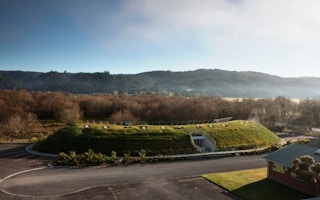The New Zealand Green Building Council (NZGBC) awarded on Thursday three new pioneering buildings with the Green Star rating, bringing the number of commercial green buildings in the country to more than 100 since the scheme was launched in 2007.
To continue reading, subscribe to Eco‑Business.
There's something for everyone. We offer a range of subscription plans.
- Access our stories and receive our Insights Weekly newsletter with the free EB Member plan.
- Unlock unlimited access to our content and archive with EB Circle.
- Publish your content with EB Premium.
Green Star is New Zealand’s ratings tool for sustainable commercial buildings. Ratings range from 4 to 6 Green Star, with 6-star as the highest certification that a building can achieve for environmental performance.
The Te Mirumiru childcare centre in Kawakawa, Northland, owned by the Ngati Hine Health Trust, was awarded a 6 star rating - the first given to an education building in New Zealand.
The other two buildings were the Sharp Tudhope office building in Taurang, which received the 4-star rating, and the Forté Health Building in Christchurch, the first Green Star medical centre, designed to be world’s first low-damage seismic-resistant designed building.
“
The Asia Pacific region is the world’s largest growth market for green building products and services. As New Zealand companies become expert in green building design and constructions, the opportunities within the global green market will grow exponentially
Jane Henley, World Green Building Council CEO
Designed by architectural firm Collingridge & Smith Architects, the Ngāti Hine’s womb-shaped building represents the Maori people’s tradition and belief that all life forms were born from the womb of the earth as the mother.
Green buildings have been growing in numbers in New Zealand’s commercial property sector, with 102 buildings given the Green Star certification as at the end of February.
NZGBC’s chief executive Alex Butler said the council is now looking forward to hit the 200-mark as the appetite for green buildings continue to grow. “Increasingly the industry is realising that to maximise value and performance, our buildings need to be designed and built with people, and the environment, in mind.”
Butler added, “These three projects show the diversity of sustainable buildings – it’s not just premium commercial space in our bigger cities. It’s fantastic to mark our century with not one but three buildings which are each extraordinary, and leaders in their own way.”
According to the council, the Green Star rated projects as of end of February include 68 offices, 20 educational centres, 10 interiors, three industrial and one medical facility building. These buildings on average use 66 per cent less electricity and 50 per cent less water than conventional counterparts.
The Green Star rates the buildings according to its environmental attributes in nine categories, including energy, transport, water, materials, indoor environment quality, land use and ecology, emissions, management and innovation.
World Green Building Council chief executive Jane Henley said New Zealand’s achievement sets an example that could inspire others to embrace sustainability. The WorldGBC said there are currently 100 countries and 27,000 companies worldwide driving the green buildings sector.
“The Asia Pacific region is the world’s largest growth market for green building products and services. As New Zealand companies become expert in green building design and constructions, the opportunities within the global green market will grow exponentially,” Henley noted.
NZBGC is looking to certify 20 more Green Star projects this year.










